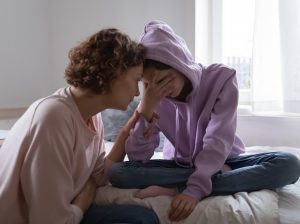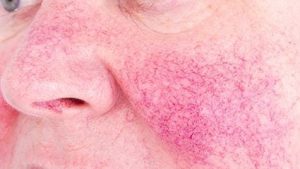ARE YOU A WOMAN experiencing a distinct lack of sexual desire, to the extent that it causes personal distress or problems in your interpersonal relationship(s)? If so, you could be one of the estimated 12% of women living with hypoactive sexual desire disorder (HSDD). If the FDA approves flibanserin for sale, you can use it to treat your sexual dysfunction. “Viagra for women,” as flibanserin is being called, has received a mixed welcome, with some lauding it as a gender-equal approach to sexual health and others maintaining their skepticism. Either way, one thing has become patently clear: there really is a pill for everything these days.
HSDD was considered a sexual dysfunction until 2013, when it was removed from the DSM-5 and replaced with female sexual interest/arousal disorder (FSIAD). This is the first bone of contention in the arguments surrounding flibanserin: the condition it purports to treat does not exist, according to psychological standards.
Furthermore, because neither HSDD nor FSIAD has definitive diagnostic criteria, diagnosis depends on a physician ruling out other possible causes for decreased libido. The problem, critics argue, is that science cannot find a working model for women’s sexual desire, and have labelled those with more “problematic” arousal conundrums as “dysfunctional.” Estimates of the number of women living with sexual dysfunctions run the gamut, from 10% to nearly 50%.
Flibanserin’s label use for HSDD garners comparisons to erectile dysfunction medications, such as Viagra and Cialis. But these drugs work by maintaining levels of an enzyme related to arterial dilation; they do not cause sexual arousal. Rather, Viagra and other PDE-5 inhibitors make it possible for aroused men to have and maintain erections. Flibanserin, on the other hand, specifically treats sexual arousal. It does not increase blood flow to erectile tissues, such as those in the clitoris; instead, flibanserin works by blocking serotonin reabsorption in the brain. It’s an anti-depressant, and FDA approval for it to be used as such has been sought and denied.
Those who claim there is a sexist double-standard in the industry regarding sexual health aren’t wrong. In 2010, commercials for the libido-enhancing oil called Zestra were relegated to late-night television – alongside phone sex advertisements – on the basis of being too bawdy. Meanwhile, similar ads for Viagra and Cialis enjoyed robust lives in daytime and prime-time slots. Women’s sexual satisfaction was too dirty for television, and criticism of network sexism was justified.
It’s important to remember that flibanserin is one of many drugs for women that come with a variety of negative side-effects. Contraception, “osteopenia” medications, and hormone replacement therapies have all been shown to be dangerous — and even lethal, in some cases — for women. Since 2010, flibanserin has sought approval on three occasions. Every time it was rejected, the FDA reasoned that its inherent risks outweigh any rewards.
Although flibanserin is marketed toward women with HSDD, it has not done well when attempting to treat sexual dysfunction. Only 10-12% of women who received the drug in clinical trials showed any improvement in their libidos. Such low numbers make one wonder: does flibanserin even work? And, perhaps more importantly, is it treating a discrete condition, or some nebulous chimera?
Perhaps part of the issue is that society has come to think of sexual desire as something easily manipulated, like turning on a light by flipping a switch. Many factors influence women’s sexual desire, including hormonal fluctuations, satisfaction in their relationships, and general wellness. These are all issues that have well-defined treatment processes. Just as wine does not cure an alcoholic’s problems, the same holds true for flibanserin: it cannot treat the underlying conditions that may cause sexual dysfunction in women.
Although women are undoubtedly sexual beings, the idea that they should have higher — or lower — libidos doesn’t sit well with this author. When doctors believed women had no sexual desire, and condemned those who did as dysfunctional, women were compelled to hide their sexual arousal from others. This compulsion may seem silly, but its opposite remains present in our society. After all, how many of us have argued with a partner because someone (read: the woman in the relationship) wasn’t in the mood?
These differences of opinion over when and how often we do it should be just that. But today, it’s far too easy for one partner in a relationship to label another as dysfunctional, and place the onus on them to correct the problem. Corrective measures are, largely, medical, and may be unnecessary. For a woman who has internalized the problems in her relationship to the extent that she attributes them to a personal failing of her own chemistry, it’s entirely possible to define her pursuit of flibanserin as a product of coercion.
And that’s the biggest problem with treating low female libidos in this way: the potential for abuse is far too high. Although flibanserin must be taken daily in order to be even marginally successful, the next drug may not have to be. What happens when women’s libido enhancers replace strong sedatives as the rapist’s drug of choice? What happens when one person surreptitiously begins putting such a drug in a woman’s food in order to make her more amenable to sex? Will we call the sex that results from that consensual?

















